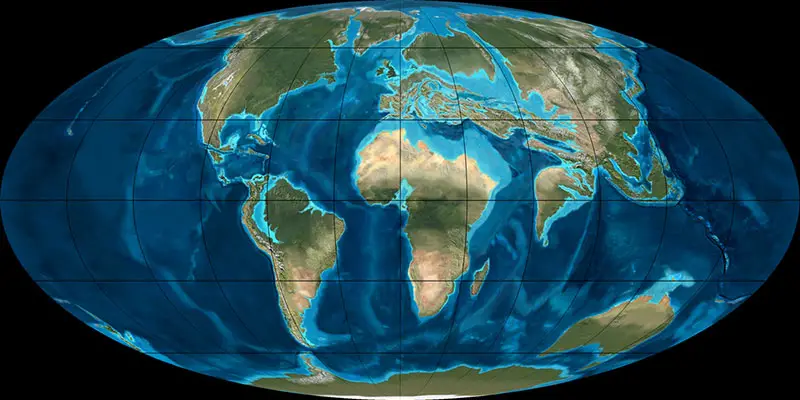†Dyseolemur (Omomyidae)
Dyseolemur ist eine Primatengattung innerhalb der Familie Omomyidae, deren 2 Mitglieder ab dem frühen Paläogen (Eozän) im Lutetium lebten, das vor ungefähr 47,8 Millionen Jahren begann und bis vor 41,3 Millionen Jahren andauerte. Viele Überreste wurden in Vereinigte Staaten von Amerika (USA) gefunden.
Dyseolemur aus der Familie Omomyidae (Tribus Washakiini innerhalb der Unterfamilie Omomyinae) war im Eozän in Nordamerika verbreit.
Dyseolemur pacificus
Basierend auf der Größe und Morphologie seiner Backenzähne schätzt man das Körpergewicht des kleinen Primaten auf 229,3 Gramm. Außerdem kann man Aussagen über die Lebensweise machen: Dyseolemur pacificus war ein baumlebender Insektenfresser.
| Sammlung | Epoche, Alter | Geologie, Formation | Kommentar zur Sammlung |
|---|---|---|---|
| Camp San Onofre | Santiago | Onofre Locality One; UCMP V-72088 | |
| Kommentar z. Taxonomie | |||
| fauna is heavily dominated by small mammals: Lillegraven and Wilson 1975 late Uintan or Duchesnean |
Weitere Funde stammen aus der Santiago Formation und der Pomerado Conglomerate Formation. Sie sind zwischen 46,2 und 38,0 Millionen Jahre alt und werden teilweise am Natural History Museum of Los Angeles County und am California Institute of Technology aufbewahrt.
| Physiologie | |
|---|---|
| Gewicht: | ? |
| Schwestertaxa | |
Literatur
D. J. Golz, J. A. Lillegraven 1977, Summary of known occurrences of terrestrial vertebrates from Eocene strata of southern California. Contributions to Geology, University of Wyoming. 15:1, p. 43 - 65T. S. Kelly, J. A. Lillegraven 1990, Biostratigraphy of Uintan and Duchesnean land mammal assemblages from the Middle Member of the Sespe Formation, Simi Valley, California. Contributions in Science, Natural History Museum of Los Angeles County. 419:1, p. 1 - 42
T. S. Kelly, E. B. Lander, D. P. Whistler, M. A. Roder, R. E. Reynolds 1991, Preliminary Report on a Paleontologic Investigation of the Lower and Middle Members, Sespe Formation, Simi Valley Landfill, Ventura County, California. PaleoBios. 13:50, p. 1 - 13
S. L. Walsh, E. B. Lander, D. P. Whistler, M. A. Roder, R. E. Reynolds 1991, Eocene mammal faunas of San Diego County. Pacific Section SEPM. 68:50, p. 161 - 178
D. T. Rasmussen, M. Shekelle, S. L. Walsh, B. O. Riney 1995, The dentition of Dyseolemur, and comments on the use of the anterior teeth in primate systematics. Journal of Human Evolution. 29:4, p. 301 - 320
J. Alroy, M. Shekelle, S. L. Walsh, B. O. Riney 2002, Synonymies and reidentifications of North American fossil mammals. . :4, p. - 320
D. P. Whistler, E. B. Lander, S. L. Walsh, B. O. Riney 2003, New Late Uintan to Early Hemingfordian Land Mammal Assemblages from the Undifferentiated Sespe and Vaqueros Formations, Orange County, and from the Sespe and Equivalent Marine Formations in Los Angeles, Santa Barbara, and Ventura Counties, Southern California. Bulletin of the American Museum of Natural History. 279:4, p. 231 - 268, DOI: 10.1206/0003-0090(2003)279<0231:C>2.0.CO;2
